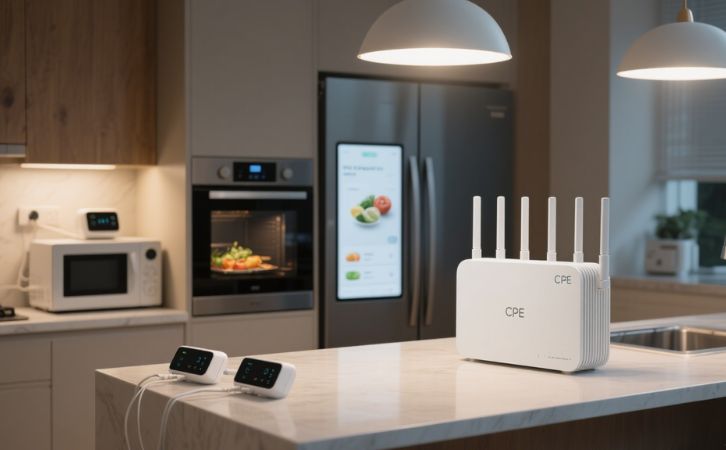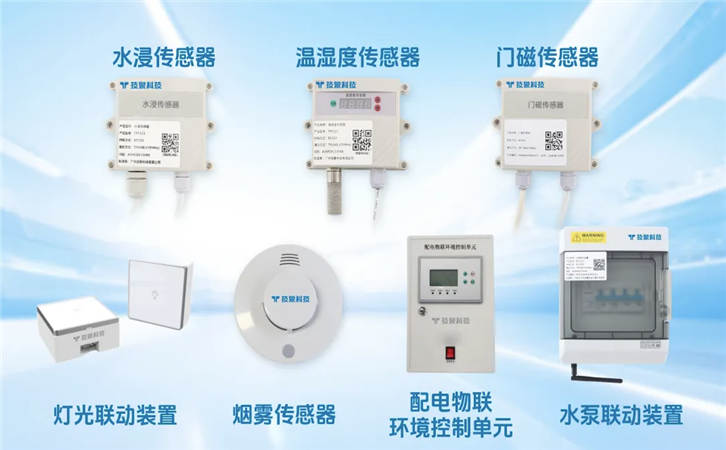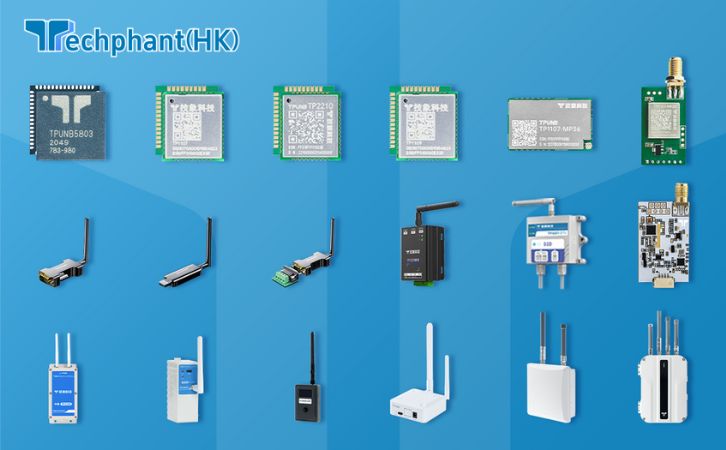In the rapidly evolving world of smart homes, Customer Premises Equipment (CPE) serves as the critical linchpin connecting a myriad of IoT devices—such as smart thermostats, security cameras, and lighting systems—to cloud services and user interfaces. As the central hub in smart home ecosystems, CPE, typically in the form of routers or gateways, facilitates seamless communication, data processing, and management of heterogeneous devices. With the proliferation of IoT devices and the demand for reliable, secure, and efficient connectivity, CPE has evolved beyond traditional networking roles to support advanced protocols, edge computing, and user-friendly interfaces. This article delves into the pivotal role of CPE in smart homes, examining its technical foundations, applications, challenges, and future directions.
I. The Role of CPE as the Smart Home Hub
Customer Premises Equipment in smart homes, often embodied as smart routers or IoT gateways, acts as the central orchestrator of device communication. Unlike traditional routers that primarily handle internet connectivity, modern CPE integrates multiple wireless protocols—such as Wi-Fi, Zigbee, Z-Wave, and Bluetooth Low Energy (BLE)—to connect diverse devices like smart bulbs, door locks, and sensors. For instance, a smart home gateway might use Wi-Fi to communicate with a cloud server and Zigbee to control low-power devices, ensuring compatibility across ecosystems.
CPE also performs critical functions like protocol translation, data aggregation, and local processing. For example, a smart thermostat might send temperature data via Zigbee to the CPE, which aggregates and forwards it to a cloud platform using MQTT over Wi-Fi for remote monitoring. Advanced CPE devices support edge computing, processing data locally to reduce latency and cloud dependency. For instance, a security camera’s feed might be analyzed locally by the CPE to detect motion before sending alerts, minimizing bandwidth usage. With Wi-Fi 6/6E, CPE offers higher throughput (up to 9.6 Gbps) and better device density, supporting dozens of IoT devices simultaneously in a busy smart home.
II. Key Protocols and Technologies in Smart Home CPE
CPE in smart homes relies on a suite of communication protocols to bridge devices and cloud services. MQTT and CoAP are widely used for efficient data exchange. MQTT’s publish-subscribe model enables devices like smart sensors to publish data (e.g., humidity levels) to a topic hosted on the CPE or a cloud broker, with apps subscribing to receive updates. CoAP, operating over UDP, is ideal for resource-constrained devices like smart plugs, using RESTful requests to report status or receive commands. For example, a CoAP-enabled light might respond to a GET request for “/light/status” with its current state.
Wi-Fi remains the backbone for high-bandwidth applications, such as streaming from smart cameras, while Zigbee and Z-Wave support low-power, short-range communication for battery-operated devices. Thread, an emerging protocol backed by the Matter standard, enhances interoperability by enabling IP-based communication over low-power mesh networks. CPE devices often integrate multi-radio chipsets to support these protocols simultaneously, with dynamic channel management to avoid interference in the crowded 2.4 GHz band. Security features like WPA3 for Wi-Fi and TLS/DTLS for MQTT and CoAP ensure data integrity, though their implementation requires balancing security with the limited processing power of some IoT devices.
III. Applications and Benefits in Smart Home Ecosystems
CPE enables a wide range of smart home applications by providing robust connectivity and management. In home automation, CPE orchestrates devices to create seamless user experiences. For instance, a smart home gateway might coordinate a routine where motion sensors (using Zigbee) trigger smart lights (via Z-Wave) and notify a smartphone app (via MQTT over Wi-Fi). Security systems rely heavily on CPE, with gateways processing feeds from IP cameras and door sensors, enabling real-time alerts and remote access through cloud platforms like Amazon AWS IoT or Google Cloud IoT Core.
Energy management is another key application, with CPE integrating smart thermostats and energy monitors to optimize consumption. For example, a CPE might collect data from a smart meter via NB-IoT and use local analytics to adjust HVAC settings, reducing energy costs. The benefits include scalability (supporting dozens of devices), reduced latency through edge processing, and enhanced user control via mobile apps or voice assistants like Alexa, which communicate with CPE over Wi-Fi. CPE also supports over-the-air (OTA) updates, ensuring devices remain secure and up-to-date without user intervention.
IV. Challenges and Limitations of Smart Home CPE
Despite its critical role, CPE in smart homes faces several challenges. Interoperability remains a significant hurdle, as devices from different manufacturers often use proprietary protocols or ecosystems (e.g., Philips Hue vs. Samsung SmartThings). Standards like Matter aim to address this, but widespread adoption is ongoing as of 2025. CPE must support multiple protocols, increasing hardware complexity and cost, which can deter budget-conscious consumers.
Security is another concern, as CPE is a prime target for cyberattacks due to its central role. Weak firmware or misconfigured networks can expose vulnerabilities, as seen in past incidents like the 2016 Mirai botnet, which compromised IoT routers. Implementing robust security (e.g., WPA3, secure boot) on resource-constrained CPE is challenging, especially for low-cost models. Power consumption is also an issue; while CPE typically uses mains power, supporting low-power protocols like Zigbee requires efficient radio management to avoid draining device batteries. Finally, user experience can suffer if CPE interfaces are complex or if cloud dependency leads to latency during internet outages, necessitating hybrid local-cloud architectures.
Conclusion
Customer Premises Equipment is the cornerstone of smart home IoT ecosystems, bridging diverse devices and cloud services to enable seamless automation, security, and energy management. By supporting protocols like MQTT, CoAP, Wi-Fi, and Zigbee, CPE ensures efficient communication and scalability, while edge computing reduces latency and enhances reliability. Applications like home automation and security systems demonstrate its transformative potential, offering users convenience and control. However, challenges such as interoperability, security, and power efficiency require ongoing innovation in hardware design, protocol standardization, and security practices. As standards like Matter gain traction and technologies like Wi-Fi 6E and AI-driven network management mature, CPE will continue to evolve, solidifying its role as the backbone of connected homes.



